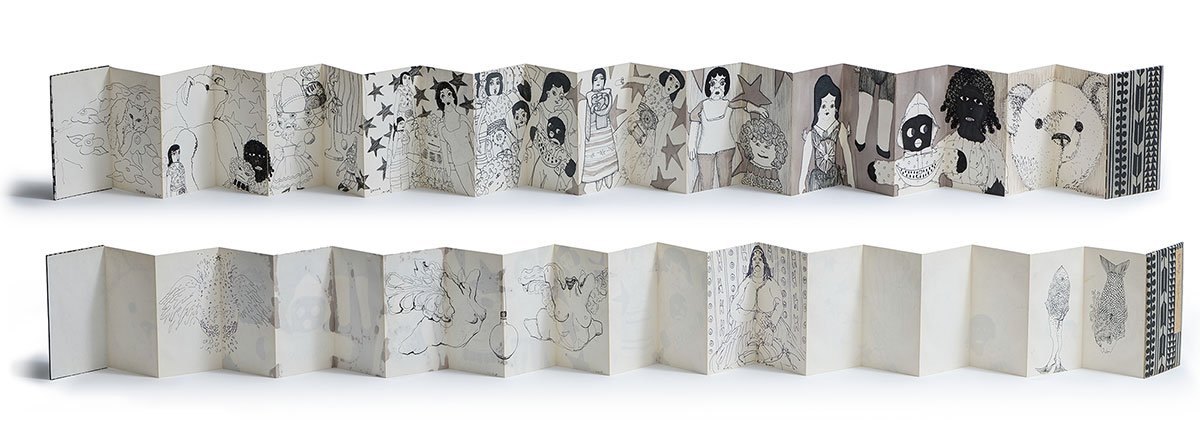
In this early sketchbook, Saar recorded a range of dolls, from those that give comfort to those—like the two “pickaninny” dolls holding watermelon wedges—that cause pain. In the nineteenth century, manufacturers advertised such dolls, which were made of durable materials, as suitable for rough treatment, presumably by the white children for whom they were purchased. In Brown v. Board of Education, the landmark Supreme Court case that outlawed segregation in public schools in 1954, social scientists Kenneth and Mamie Clark submitted evidence from tests performed with dolls that demonstrated segregation’s demeaning impact on Black children. The perpetuation of stereotypical images reinforced those negative feelings.
Betye Saar
Dolls sketchbook, ca. 1968–70
Marker and watercolor in accordion-folded sketchbook
Courtesy of the artist and Roberts Projects, Los Angeles, California. © Betye Saar.
photo © Museum Associates/LACMA
